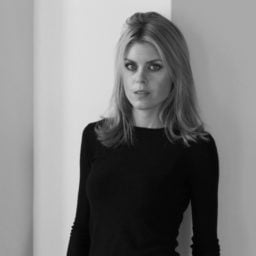Art World
How Artist Juan Garaizabal Sculpts ‘Ruins, Monumentality, and Memory’
The artist's new work reflects on the history of Rome.
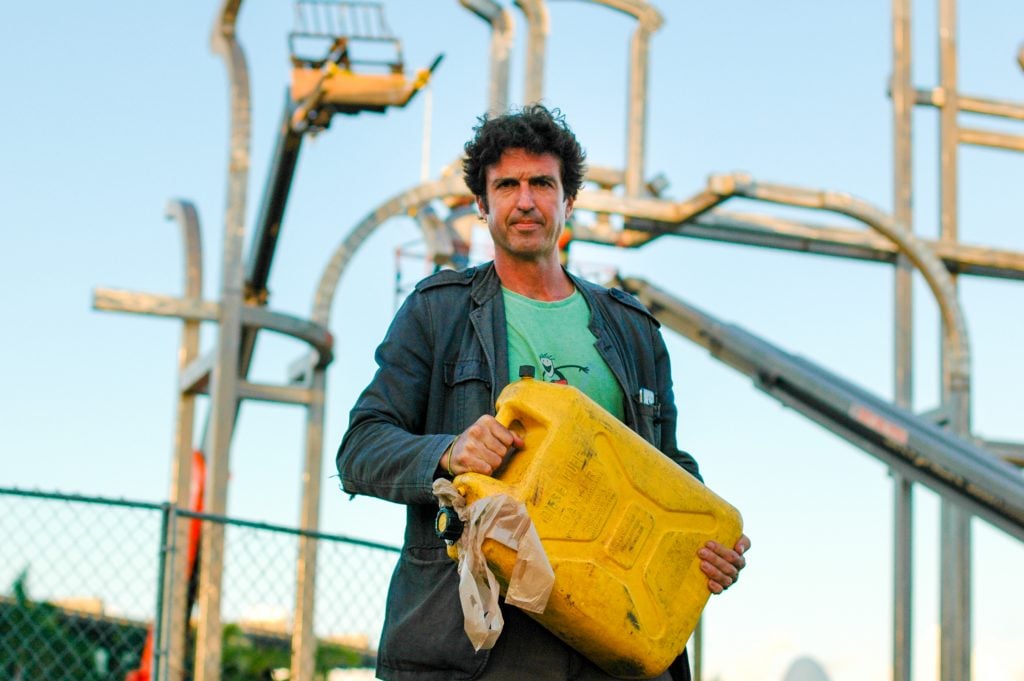
Juan Garaizabal is an artist whose work is not easily contained. In both his large, public installations and more intimate sculptures, the works, solid as they are materially, have a dynamism that extends beyond their form limits. With a deep reverence for history, he pays homage to the past literally—by mixing histortic and contemporary materials. In public installations that take the form of building outlines and sculptures, he pays homage to the architecture of the past. A new suite of works is on view at Arco Madrid, where the artist is showing with Galeria Alvaro Alcazar.
In new works, he turns his attention to the ultimate historical reference: Rome. In conversation, he explained the genesis of the project, and the importance of looking to the past.
What significance does Rome hold for you? Tell me about your favorite memory from the city.
Being in Rome is actually floating on layers and layers of history, references, and energies. Everything happens on many levels at the same time. There, I feel like I’m hanging in one of those engravings by Giovanni Battista Piranesi, with all the vertigo of history and scale.
In the present layer there are always a thousand versions of Dolce Fare Niente, or, the “sweetness of doing nothing,” which, when done in Rome is the equivalent of doing a lot.
You said to me ‘Nowadays, everything is considered exceptional—so nothing is extraordinary.’ Can you elaborate on that?
We live in a dynamic where mediocrity is glorified. Anyone can become a reference. In this environment, it’s increasingly difficult to distinguish those significant contributions, since of course all messages claim themselves as extraordinary. This creates a culture where every message must be considered. With my time, I refuse to leave Schopenhauer unread in order to know what the favorite color of an uneducated minister is.
I say all of this assuming that I am the worst noise for many others.
You mentioned that there is too much information in today’s world; too much noise. How do you escape it?
I observe a lot before allowing something to enter into my head. Most of what appears is cluttering, so I practice selective ignorance. For example, in recent years I have learned to speak Chinese, and I think that a TV series would take up more space in my brain than the whole language… which I now adore.
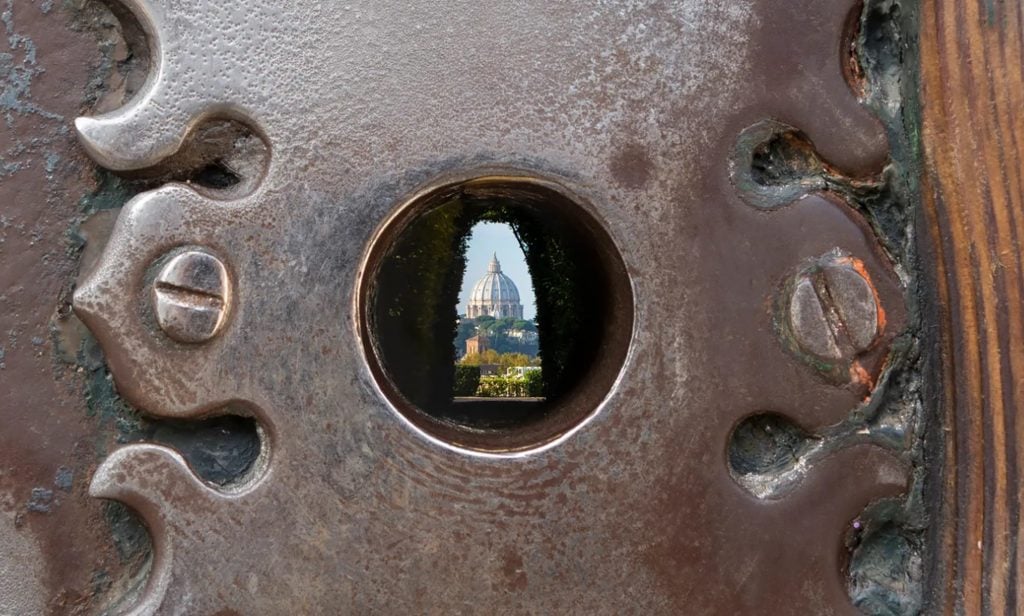
The iconic view through the Aventine Keyhole in Rome. Photo courtesy of the artist.
Your work centers on the famous keyhole in Rome. Why did you choose this as the focus of your work?
It is a symbol of many things that I believe in. The focus on something individually unique, the perspective, the history. The energy of the past and recovering memory has always been the axis of my artistic discourse.
I like the way this visual tunnel involves the spectators physically, which is reflected in emotions. I’m of the generation of artists who turned Berlin in the ’90s into an open-air art gallery, tremendously participatory and transformative of the city. I believe in that phenomenon. Our art was integrated into people’s lives.
The keyhole used to be a well-guarded secret, but now there is usually a long queue to see through it. When did you first see it? What does it mean for you?
The keyhole of the Knights of Malta is one of the city’s more intriguing off-the-beaten-path sights. With its rudimentary door and perfectly framed view of Saint Peter’s Basilica, it’s common to see visitors queue up in front of the impenetrable door to peek through—and many try to capture it with their camera. However, the view is one that can only be truly experienced in person.
It was my Madrid gallerist and old friend, Álvaro Alcázar, who first encouraged me to visit it. Thus, I travelled to see it in September 2023.
The property lies in the Piazza Cavalieri di Malta, which was designed by Giovanni Battista Piranesi in 1765. In Piranesi’s work, I recognize a vision of reality with a simultaneous fascination for ruins, monumentality, and memory, which are very similar to my own.
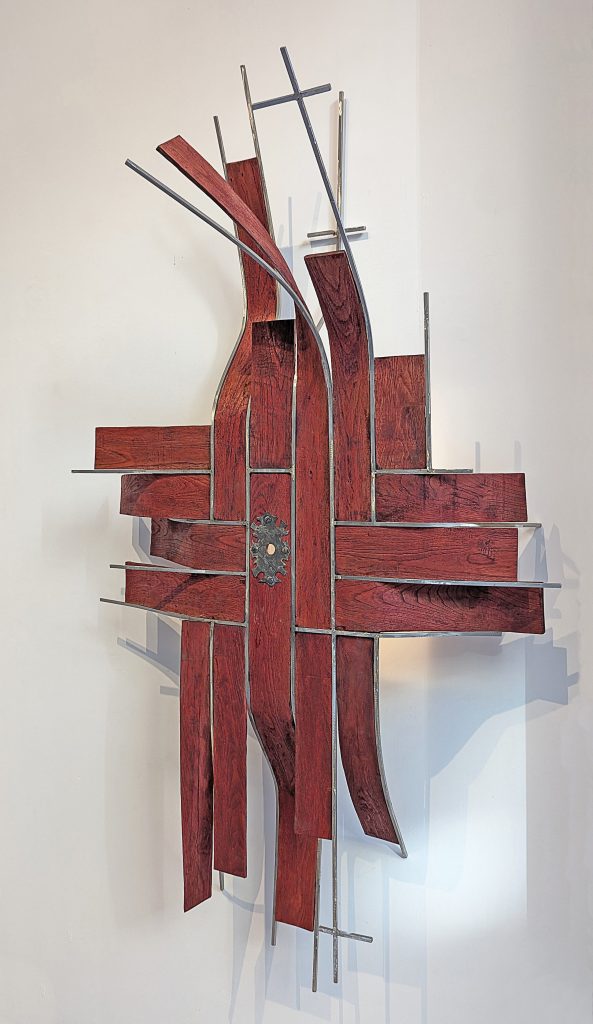
Juan Garaizabal’s work Vista Oculta for ARCO Madrid, 2024.
What are you trying to communicate with this work?
If you let yourself be carried away by curiosity for the unknown, you leave the noise behind and surprise appears, then the emotion and excitement leads you to want to know more. It’s the idea of the beginning of something incredible.
How long did it take you to finalize this project? What was the working process like?
Once I decided to work with the concept of vision through the key to the past, the exploration of how to translate it into a work began. My life as a sculptor is clearly a continuation of the life of adventure.
My mother is a great adventurer and took me and my two siblings on great journeys by truck. Across all of Africa, from Madrid to Cape Town, and in Asia from Pakistan to Beijing along the Karakorum Highway and the Silk Road. The mechanics of my work are the same as the ones we applied then. Based on my means, I try to solve issues to make the trip real within an environment of total uncertainty, so each idea starts from scratch. Also, everything is made by me at my studios and using recycled or recyclable materials.
Over the course of two entire months, I experimented. I started doing tests on curing different woods, with fire and water until I got the effect that I wanted with acacia wood. Then with copper oxidizing and bending tests, lighting tests, clamping tests, and focusing tests. In those two months I worked simultaneously on many other projects. I really believe that my sculptures must have my hand gesture, be unique pieces and not replicable, I think that for collectors that is a great value.
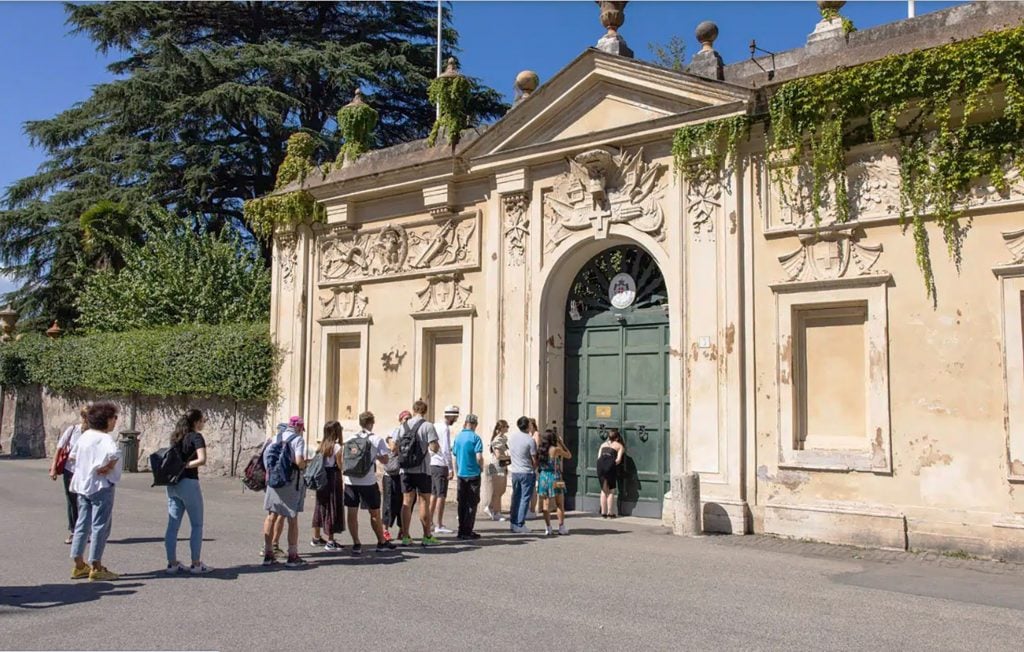
A line of people waiting to peer through the keyhole. Photo courtesy of the artist.
You’re attempting to encourage individual thought, which you feel is lost in today’s world. Why do you think that individuality has been lost?
I don’t think it’s completely lost, but I do think that one of the best things an art piece can do is interact with people, encouraging individual processes.
Spain has brought forth some of the most respected artists in history. As an artist working in Spain today, what would you like to see more of in the Spanish art world?
There are countries where being a native does not disqualify you from exhibiting in the National Museums. Unfortunately, Spain is not one of them. My wish is that it will become one soon.
If you could have dinner with any three artists, living or dead, who would you choose?
Piranesi because I think he saw reality the way I do, 300 years ago. Brancusi because he was a great sculpture revolutionary… and a man of few words. Christo (and Jeanne Claude) because they brutally marked me with Wrapped Pont Neuf in Paris when I was 14 years old. Art must pass centuries of filtering. Being able to choose, I tend more towards those legacies that grow over time.

